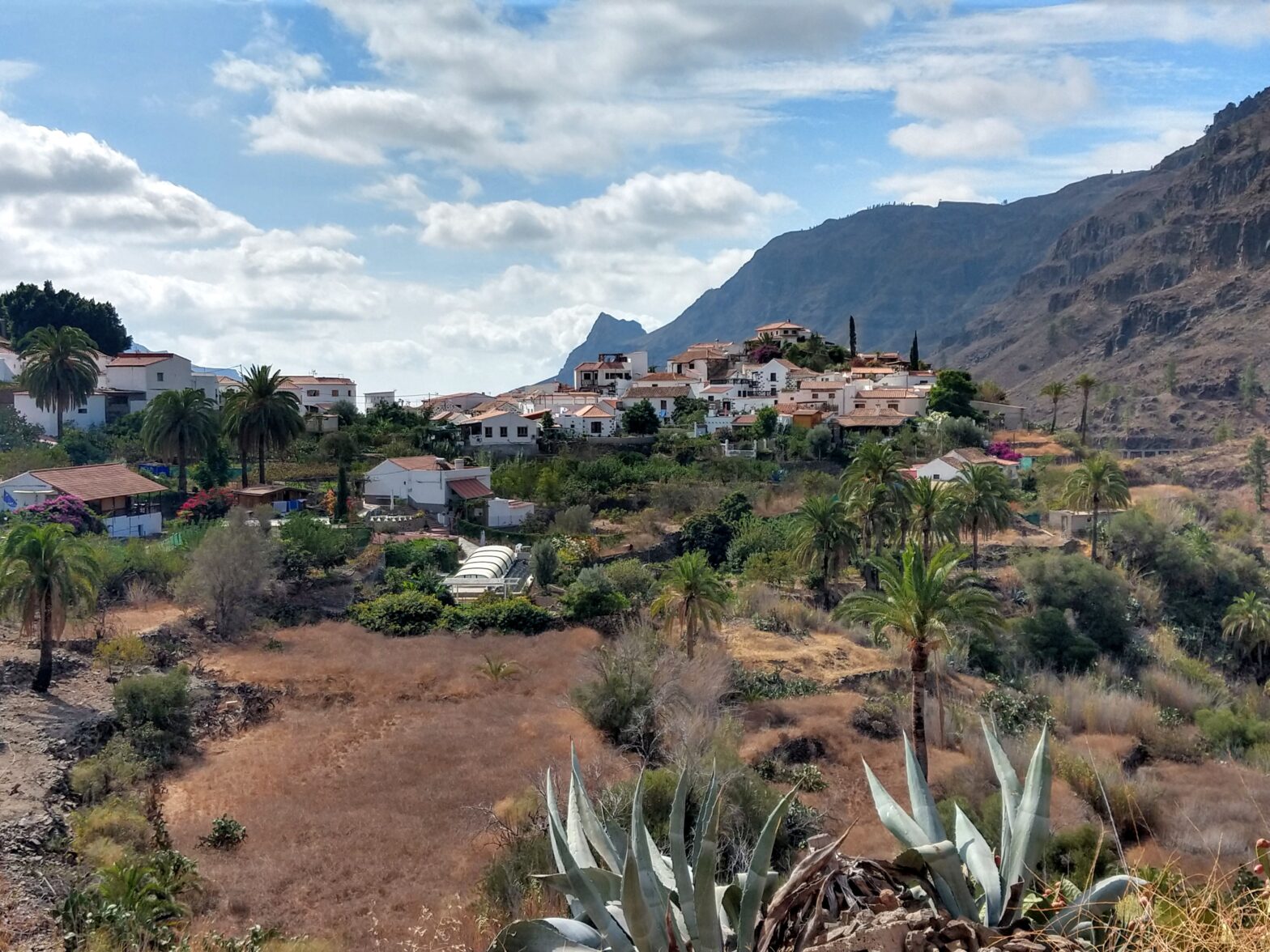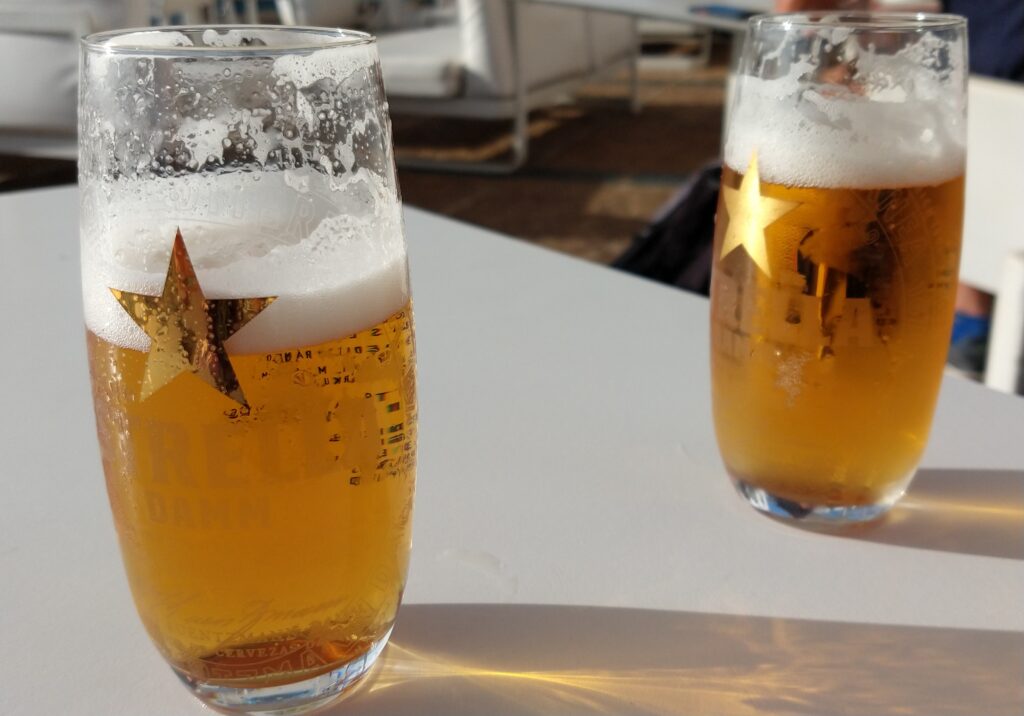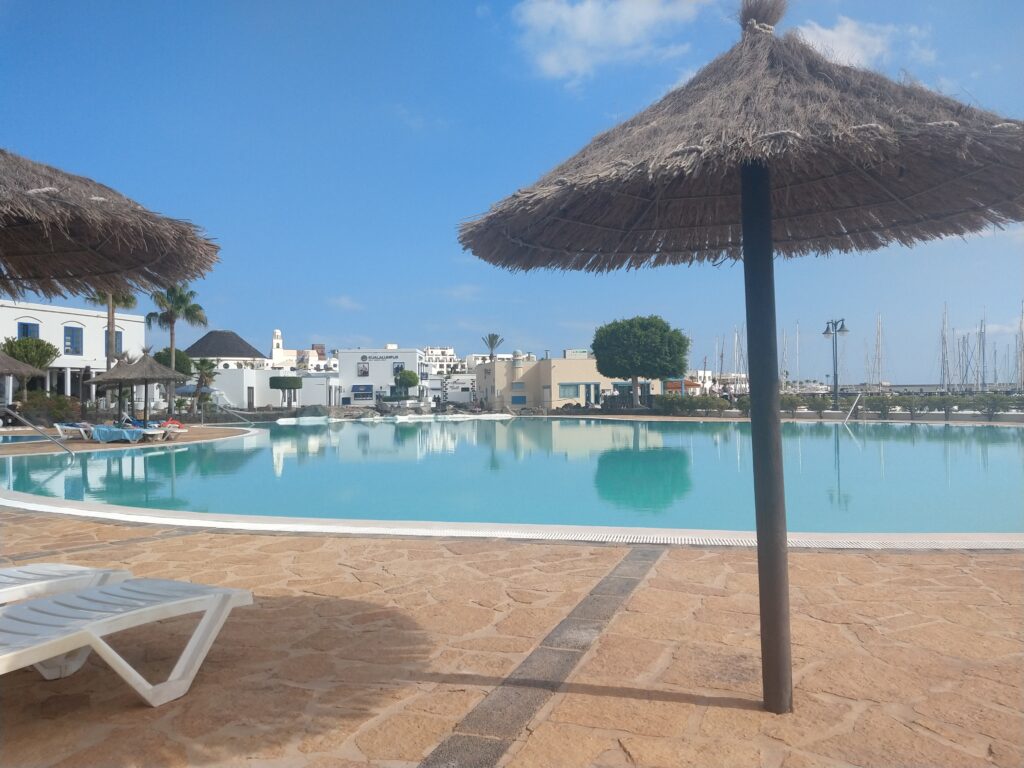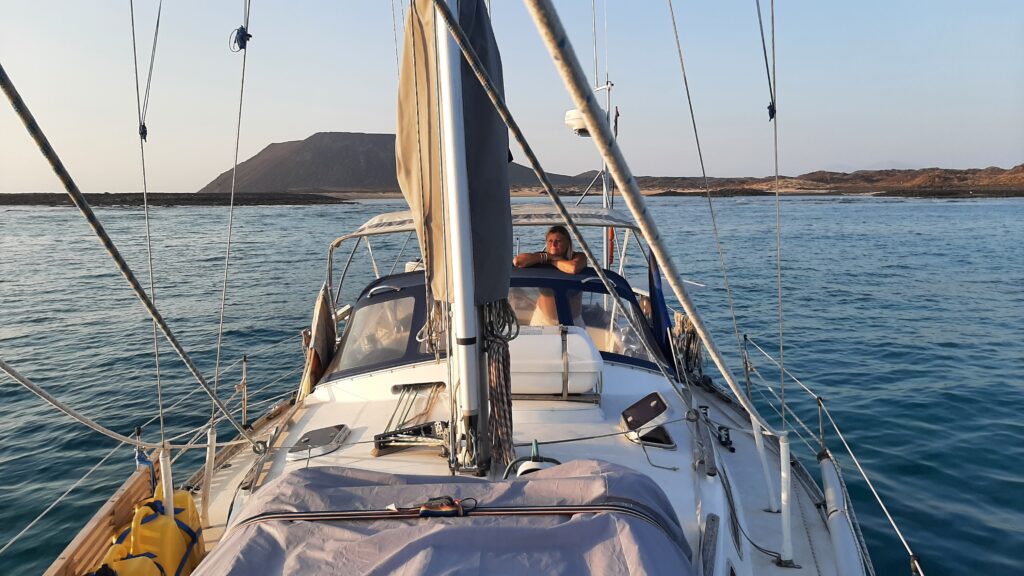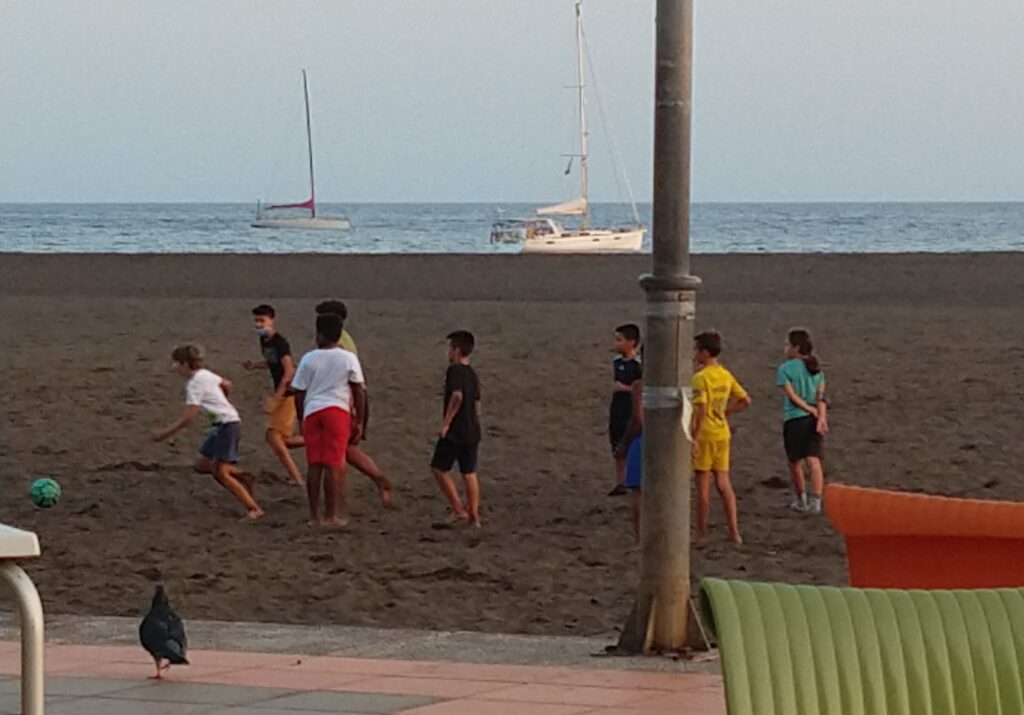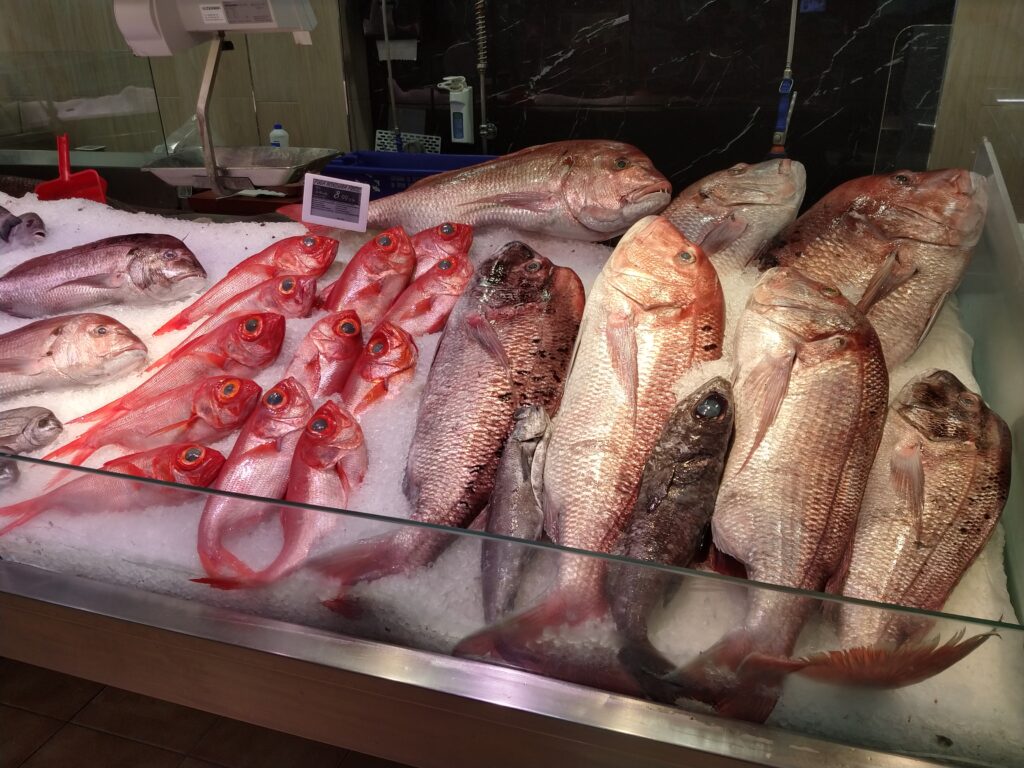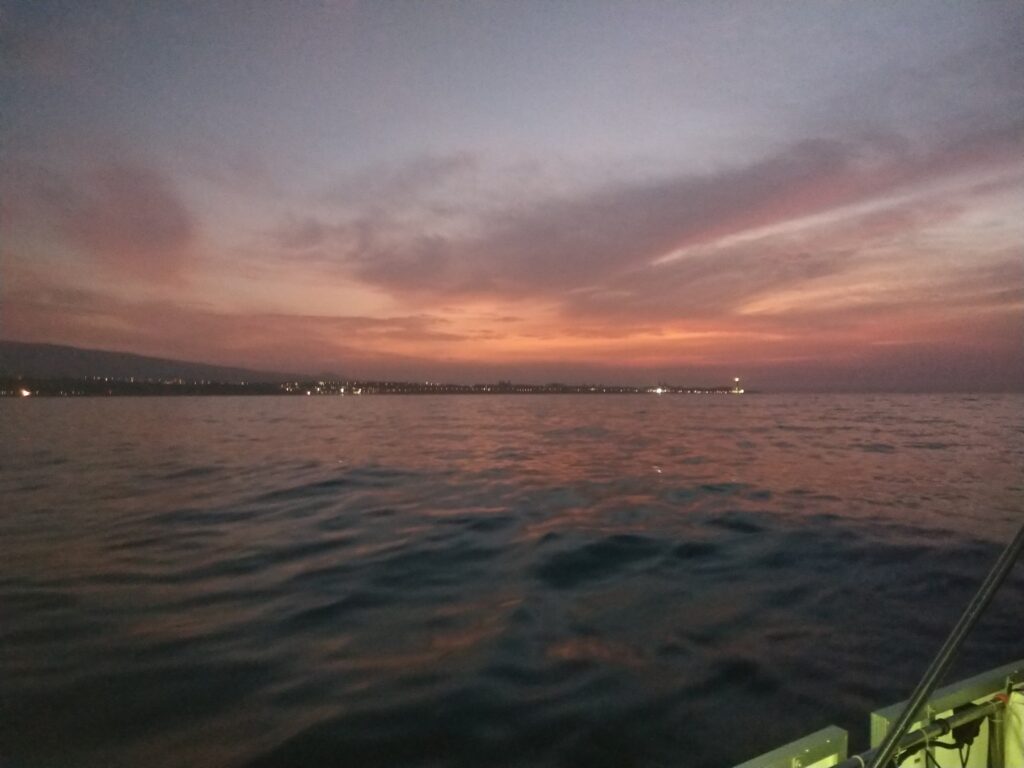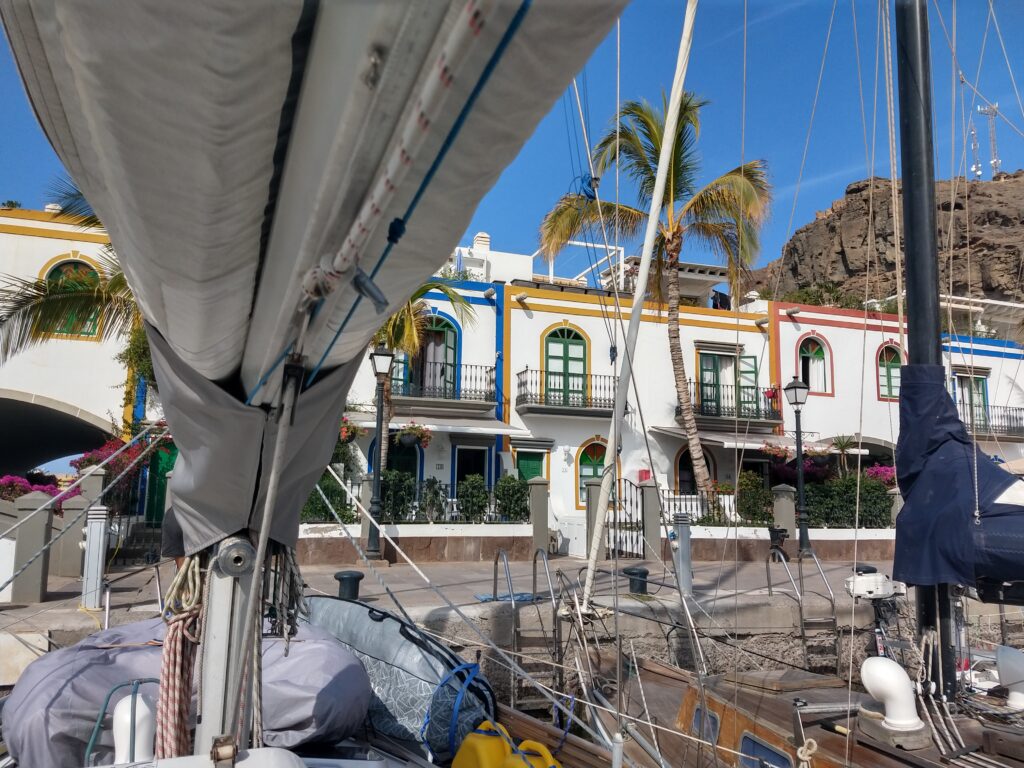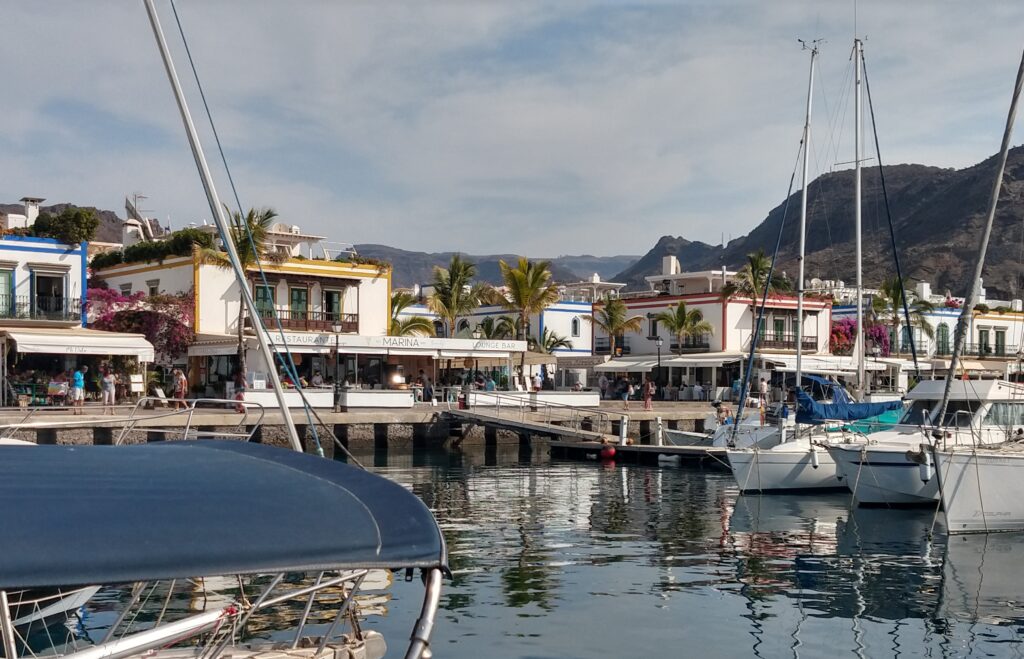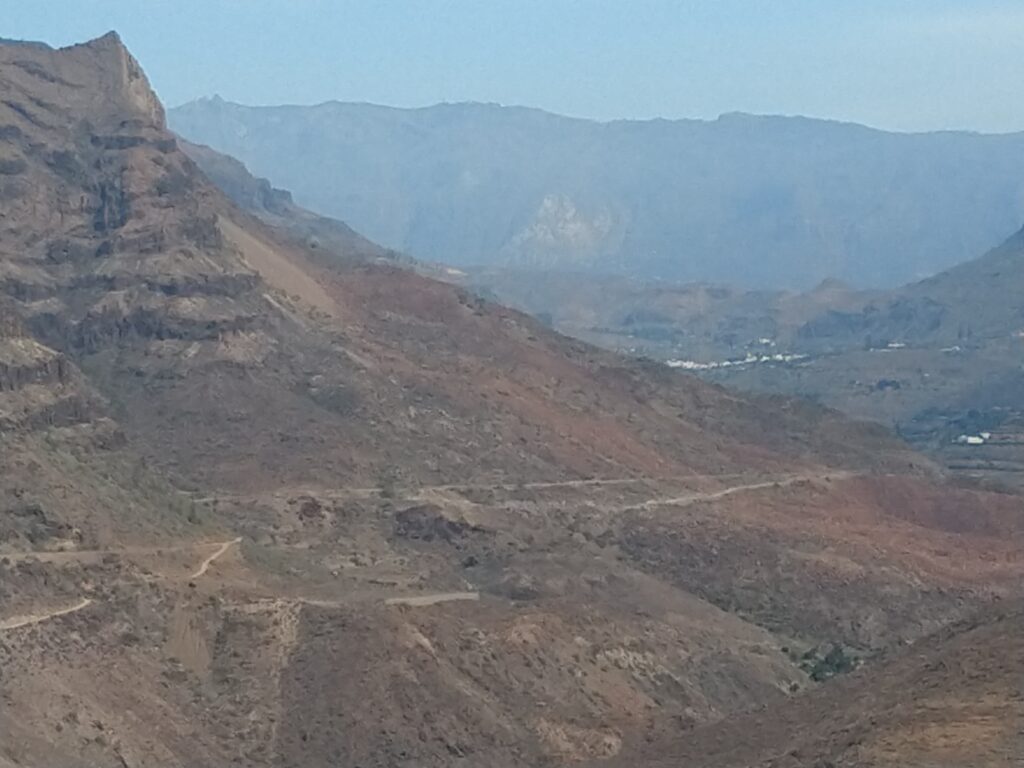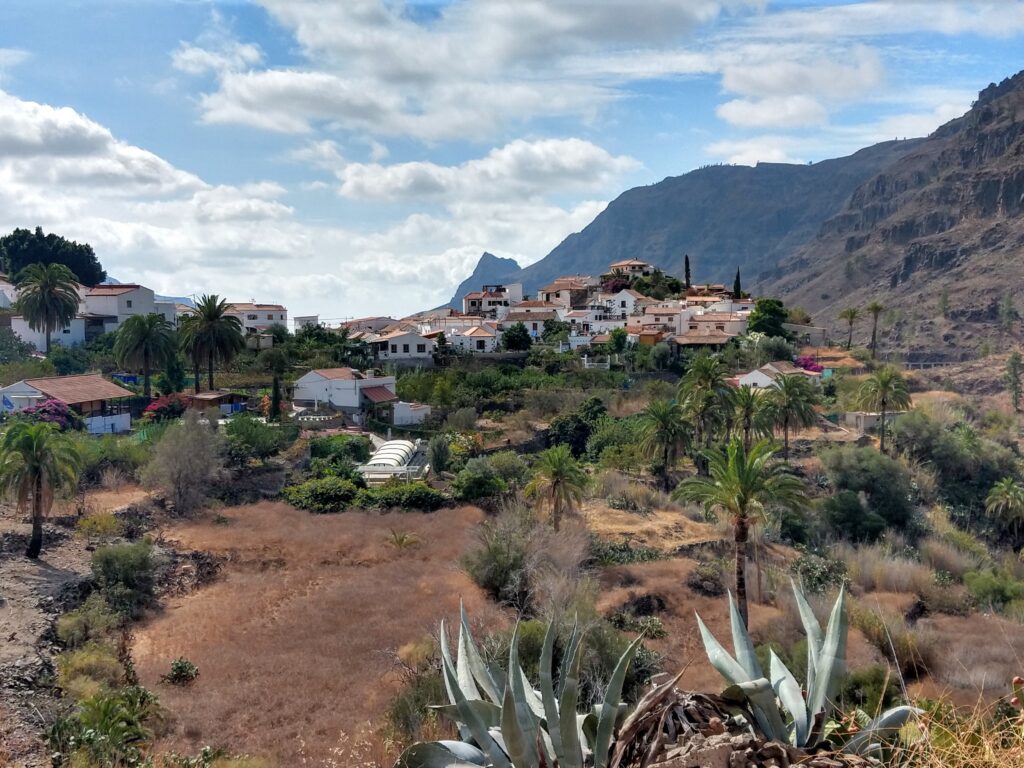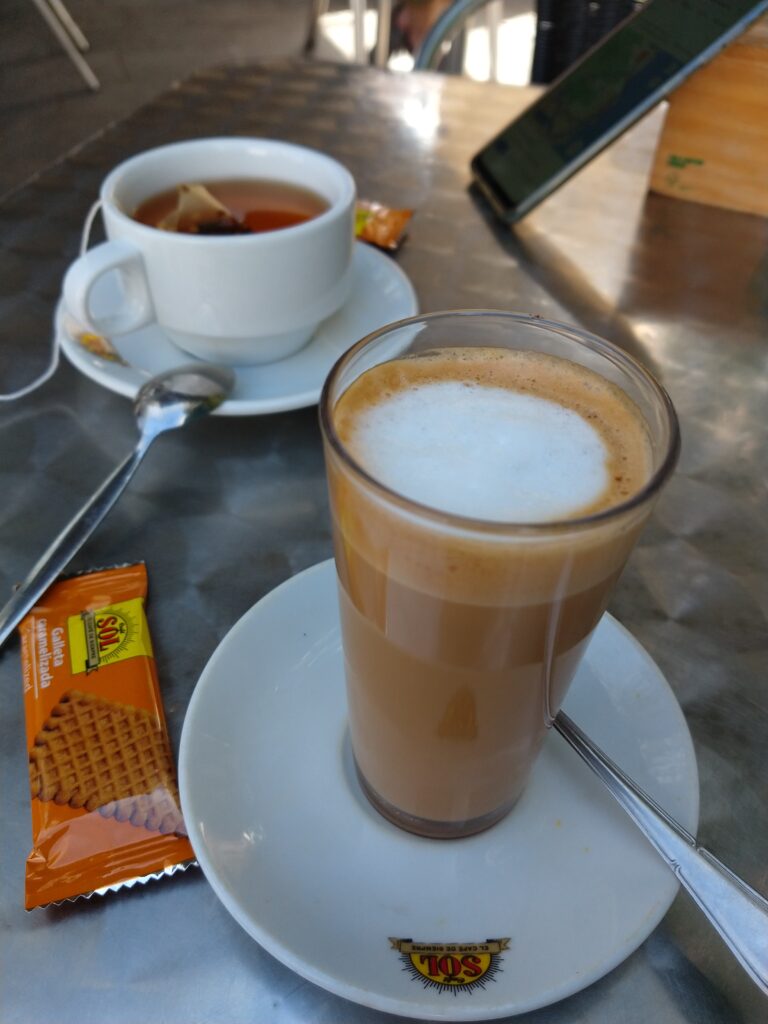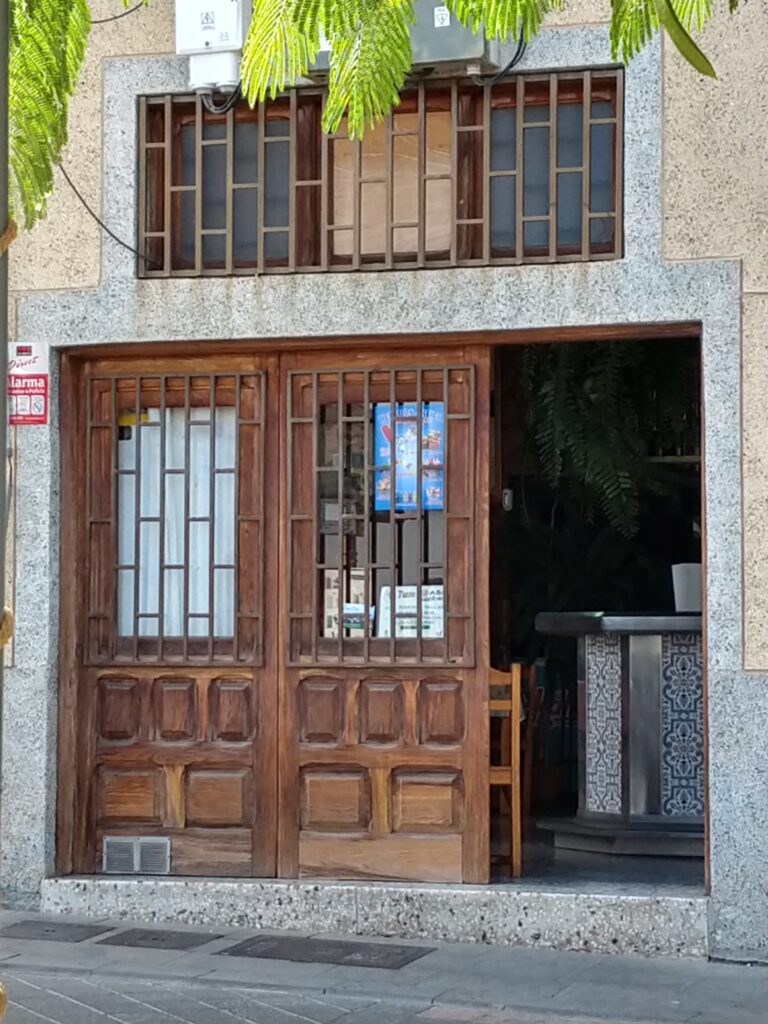Arriving at our final, most southern port on Lanzarote (Rubicon), we decide to slow down. We have constantly been busy planning the next steps, touring the islands, arranging shopping, etc. and we need a little less. We go to the beach for an afternoon, lie by the beautiful pool at the harbor, do some boat shopping (Mul finally buys his coveted Comfort seat!) and have an adjustment to the bimini (sunshade) done. All this is a 5-minute walk from our berth, ideal!
Here too, the combination of marina with restaurants and a weekly market for the surrounding resorts creates quite a crowd. At one port this is a bit more present (for example in the Algarve) than at another, and the character also differs from ABBA hits all evening to impressive drums. Later at Puerto Mogán on Gran Canaria we hear a lot of Dutch around us; In the Netherlands, the Northern and Central Netherlands have autumn holidays.
We still wear a mouth cap everywhere inside, in shops and naval offices and there are still pumps with disinfectants everywhere. It is no longer so present in the showers, but the showers are often very quiet.
We experienced Fuerteventura mainly from the boat with an anchorage at an island Isla de Lobos (described earlier) and a harbor at Gran Tarajal where +- 8 other tourists walk around and we are further overwhelmed by the life there with many groups of children, restaurants where football is on (we are here on Saturday afternoon and evening), people strolling along the boulevard and the eateries full of people. And a wonderful large supermarket. In short, mainly the life of the island and no tourist mobs. Fuerteventura’s coastline is bare at first; in the south there are more sandy beaches and resorts, and it seems to be ‘more populated’.
Here in the Canary Islands we experience that we are actually close to Africa: we regularly hear Moroccan over the VHF radio. There is also an “All ships, all ships” warning about the presence of migrant boats. Fortunately, we did not encounter any of them. And also fortunately, we did not hit the floating whale that various warnings have been issue about. It never became clear to us what was wrong with the beast.
In 1 night we cross to Gran Canaria to Mogán where we meet a friend (I call her my other twin, because she also has a twin sister) who we have known from volleyball for a long time, and her partner. When she waves goodbye she tries to turn their dog into our ship’s dog, but we have not honored that.
We left Puerto Mogán, because there was no more room for us in the harbor and we moved a little bit to the south. Here too the harbor (Puerto Pasito Blanco) is quite full and we have to continue in a few days. The wind blowing through the palm trees that are plenty over here, sounds only slightly different than the wind blowing through the pine trees close to the coast in Holland, which brings back some memories from back home.
Tenerife and Gomera are also full, so we are still a bit unsure about where to go next. We do some chores and practice on baking bread, something that we will need for the big crossing. We visited a lot of supermarkets to buy bake-off bread and received the tip from other sailors that Lidl sells ready-made bread mix. Off to Lidl! In the meantime, we also took some more active action not to get cockroaches on board.
We anchor in front of the harbor where several boats anchor, swim around the boat and rent a car for 2 days to cross the interior of Gran Canaria and go to Las Palmas. The interior is so much more beautiful than the coast! Here there’s also another kind of tourists (hikers and cyclists).
Because sailing at night turned out to have quite an impact on the well-being and sleep of the crew, we found a 3rd crew member willing to fly in, so that the three of us can get the job done. We are very happy with this!
Within a few days we will cross over to Cape Verde; a crossing of almost 800 nautical miles. First to Palmeira on Sal, then the island of Boa Vista and then to Mindelo on Sao Vicente.
